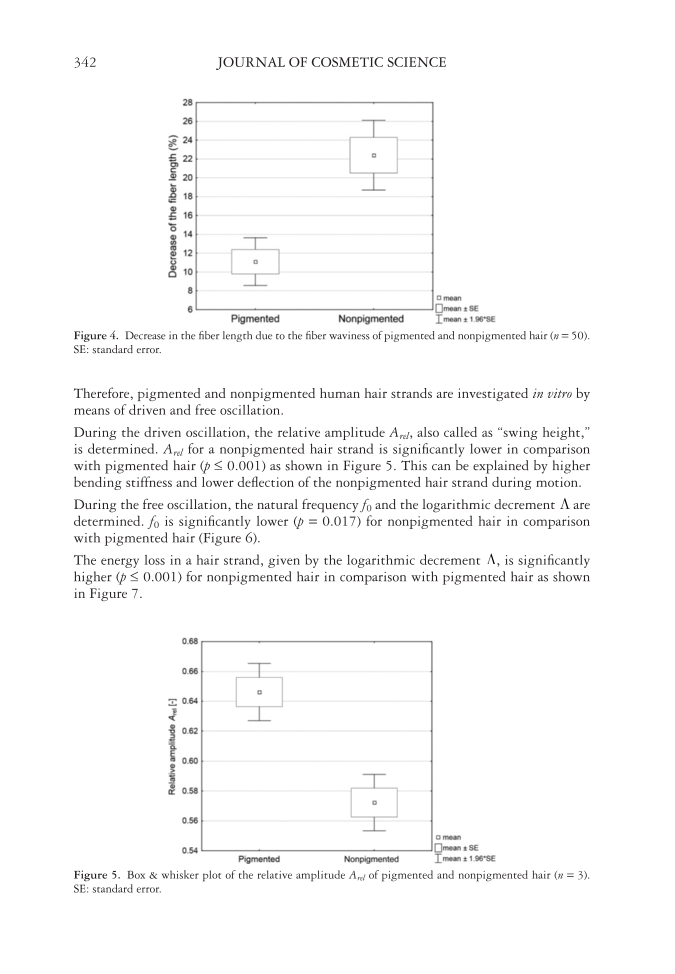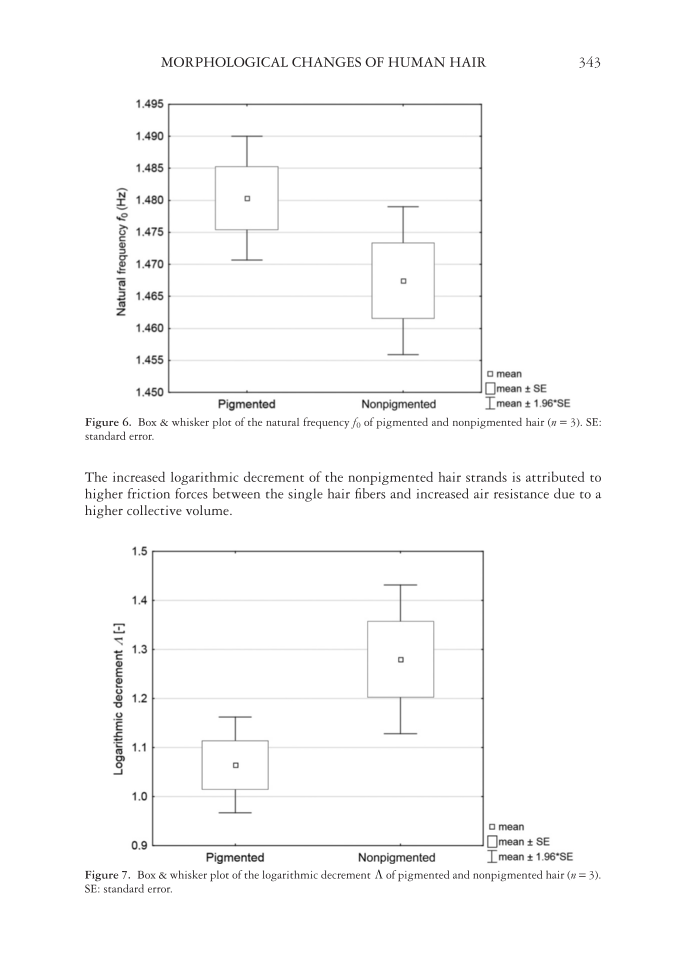JOURNAL OF COSMETIC SCIENCE 342 Therefore, pigmented and nonpigmented human hair strands are investigated in vitro by means of driven and free oscillation. During the driven oscillation, the relative amplitude Arel, also called as “swing height,” is determined. Arel for a nonpigmented hair strand is signifi cantly lower in comparison with pigmented hair (p 0.001) as shown in Figure 5. This can be explained by higher bending stiffness and lower defl ection of the nonpigmented hair strand during motion. During the free oscillation, the natural frequency f0 and the logarithmic decrement - are determined. f0 is signifi cantly lower (p = 0.017) for nonpigmented hair in comparison with pigmented hair (Figure 6). The energy loss in a hair strand, given by the logarithmic decrement -, is signifi cantly higher (p 0.001) for nonpigmented hair in comparison with pigmented hair as shown in Figure 7. Figure 4. Decrease in the fi ber length due to the fi ber waviness of pigmented and nonpigmented hair (n = 50). SE: standard error. Figure 5. Box & whisker plot of the relative amplitude Arel of pigmented and nonpigmented hair (n = 3). SE: standard error.
MORPHOLOGICAL CHANGES OF HUMAN HAIR 343 The increased logarithmic decrement of the nonpigmented hair strands is attributed to higher friction forces between the single hair fi bers and increased air resistance due to a higher collective volume. Figure 6. Box & whisker plot of the natural frequency f0 of pigmented and nonpigmented hair (n = 3). SE: standard error. Figure 7. Box & whisker plot of the logarithmic decrement - of pigmented and nonpigmented hair (n = 3). SE: standard error.
Purchased for the exclusive use of nofirst nolast (unknown) From: SCC Media Library & Resource Center (library.scconline.org)









































































































